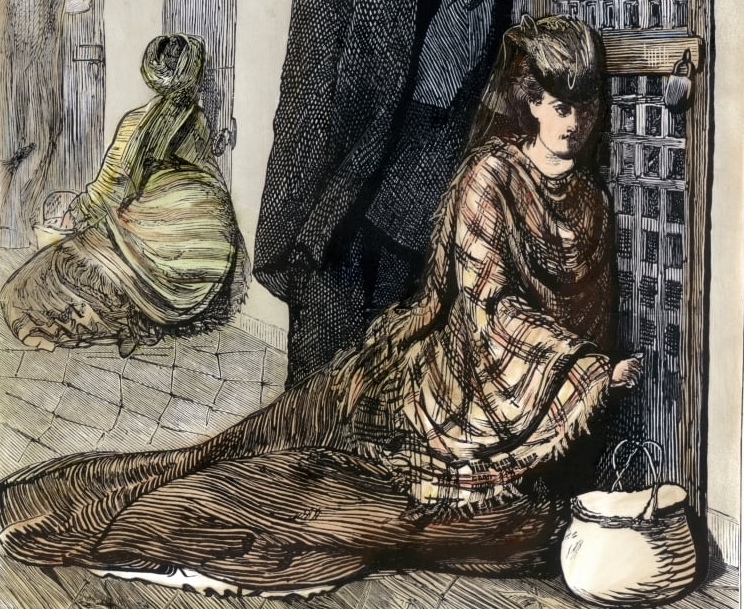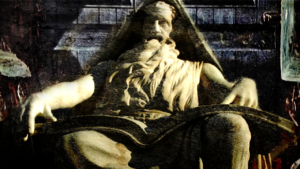Making Art with Criminals

I worked in one of Italy’s most ancient male prisons
When I arrived at San Vittore’s prison in Milan, during a stereotypical foggy and grey winter day in the city, medieval gates covered in studs stood in front of me. The guards opened the gates and I walked through tall, mighty Roman columns that led to the main room. The guards were mostly southern Italian men with striking facial features and statuesque physiques. My colleague turned around and said to me, “Do you see how handsome they are?”. Admittedly, it seemed like we were entering a casting set for male models, rather than a prison. Young southern Italians often look for state-funded jobs in the north of Italy, as there are hardly other vacancies available to them in the south, an area afflicted by corruption and unemployment.
The entrance of the prison gave a feeling of solemness, engulfed by darkness. It was cloaked in religious symbolism against a backdrop of concrete, decaying walls. One of the guards stood at the entrance against the wall, with a patriotic prayer inscribed in a plaque above him, meant to motivate the officers to fulfil their duties with criminals. It said:
“From the grey prisons, where humanity that has violated the laws of men atones for its sins, we want, O Lord, that our spirit, overcome every barrier, comes closer to You to receive faith and constancy in the fulfilment of duty. Inspire us, O mother of God, mercy for those who suffer so that the fraternal feeling and the need for duty are reconciled in us. Give us, O Saint Basilides, the strength so that our commitment to serving society in the name of God and our homeland will never weaken. Bless, O Lord, our homeland, our departments, our families and the brothers entrusted to us. This we ask of you, O Lord!”
Our phones were confiscated. After the metal detector, there was a large crucifix made of wood that welcomed the second entrance. We walked through different gates with the guards, who held a multitude of keys, until we reached the main roundabout, surrounded by the corridors where the prison cells were kept. The roundabout was ancient, picturesque, and divine, with a simultaneous feeling of mystical dread and gloom. The Catholic iconography was a potent expression of God’s might, with large, ceramic statues of Jesus and the Virgin Mary, a ceiling with a net to avoid the ancient pieces from the affresco on the dome falling down on those crossing. The corridors where the prisoners were kept had signs that said “Raggio I, Raggio II, Raggio III, Raggio IV, Raggio V”, which stood for “Ray” with an ancient Roman numeral, meant to divide the halls opening like rays of light from the roundabout.

We crossed one of the rays through the prison cells to reach the classroom. The hall was cloudy, with an overwhelming smell of tobacco. Many of the prisoners smoke inside the corridors. While we were walking through the ray where the inmates lived, many of them stared at us. Some of them roamed freely through the hall, others were locked inside their cells with their hands holding the gates. They weren’t accustomed to seeing groups of strangers crossing by. Inside the cells, as many as seven inmates were sometimes crammed together in bunkbeds. Prisons in Milan are experiencing an overload of inmates, without enough cells for them, or guards to maintain security. During lockdown, they organised a revolt because they, too, suffered from the claustrophobic isolation, without visits or activities.
I have long wanted to volunteer in prisons. I’ve always been interested in helping those who are at the margins of society; the outcasts. In my journalistic work, I am fascinated by extremists of every kind. I want to understand their story: what brought them to where they are, and how their minds function. But Italy’s bureaucratic system makes volunteering for individuals in prisons challenging. They’d rather prioritise institutions that can guarantee security. So, when the arts academy that I work with offered to work in prisons, I was elated. The plan was to teach the prisoners how to paint with oil. The academy chose a sample of one of the statues by Gian Lorenzo Bernini, a 16th century sculptor, to paint. At the end of the course, their paintings, along with our own from the academy, would be presented in the prison as an exhibition for an event organised by the theatre La Scala, the most prominent theatre in Milan, which would showcase one of their operas with a projector inside the prison roundabout as a gesture of charity.
The prisoners were eager to learn how to paint. To fix their mind on something other than their jail cells and the quarrels and power struggles they contend with on a daily basis. Painting with oil is the hardest approach to painting, and the most rewarding. The most impactful and detailed Renaissance paintings were made with oil. Many of the prisoners said that they lost track of time, because they entered a meditative state while trying to paint the image – indeed, it’s the feeling that makes painting so fulfilling to me, too.
One of them had a swastika tattooed on his hand, another had a scar on his mouth like the Joker, another had tattoos on his face. It took a few days for them to open up to us. Each had a story to tell, though each seemed to minimise it, as if they were trying to impress us. Except for one, who was proud to tell me he had served 20 years, and would continue working for an organised crime group in Italy in the south once he left, because he has to honour his bloodline, and because he has no other choice. Organised crime groups, like the mafia, don’t let you leave once you make a vow, because leaving would imply you could become an informant, and informants get killed. He had tear drops tattooed under his eyes, which I knew signified the people he had killed. He confirmed that to me.
Besides him, the other prisoners were eager to show that they wanted to lead a different path. One of them was a young man of 26-year-old from a small city in Lombardy. He had blonde, thick hair, piercing blue eyes, strong facial features, and tattoos on his face and neck, some for his lovers. He was sharp. Despite our small age difference, he made me reflect on how I would feel if I were his mother and saw my son robbing himself of his youth. Of a potential great destiny. He started organising robberies when he was just a teenager. He had been arrested in Italy, escaped to Africa, impregnated a young woman in a village, ended up in a prison in Africa too, and returned to Milan just to be arrested again. He said he would hide tens of thousands worth of cash in his garden after his robberies. He had spent 10 years of his life in and out of jail, and said to me, “I don’t want to live like this anymore, we all make mistakes. I have my life ahead of me, I want to live beyond the prospect of a jail cell.”
Working as a woman in a male prison can be compromising. Indeed, male prisoners often approach you. One of them asked me to escape with him to another country once he left the prison. He was Cuban, with a clean, even innocent face; he was only 21 years old. Another asked my colleague for her email. While she gave it to him, I urged her not to respond to his emails. It’s too much of a liability for females to become a support system for male prisoners outside our volunteer function. If we had been men, I would have welcomed the possibility. But we were young women, and the erotic male drive, currently suppressed and simultaneously compounded, couldn’t escape us.
We asked them about their visits, and most said that only their families, wives or girlfriends would make the effort, and the most depressing prospect for them was waiting for their weekly visit and sometimes seeing no one arrive to fill the empty chairs staring at them across the room. Oscar Wilde wrote about prisons, “But we who live in prison, and in whose lives there is no event but sorrow, have to measure time by throbs of pain, and the record of bitter moments. We have nothing else to think of.” I could sense this slow, painful passing of time while working with these inmates. But I could also sense their hope.
We were left alone to work with the prisoners in a classroom, without a guard overseeing us and without surveillance cameras. We cleaned the paint brushes together in their bathrooms. This approach was less restrictive than some rules required in mental health facilities in the United States, where patients are surveilled every half hour by staff, and CCTV footage reaches every corner of the building. The religious symbolism was also a feature that was markedly different to many other prisons in the West. It gave a feeling of sanctity and warmth, despite the bleak and tragic circumstances. In contrast, displays of Christianity in many other Western nations are seen as an affront to a sterile version of secularism.
We also offered painting classes to the guards in the afternoons, many told us that the prisoners inevitably create weapons inside their cells. As officers, they said they can’t always control it because they are under staffed, and because sometimes you need to let them deal with their own hierarchies. But the prison did offer prospects for rehabilitation for inmates: they had therapists, and many volunteer organisations offering to help with their education.
Not least the theatre La Scala, which offered to show their prestigious cultural event of the opera “Don Carlo” as an official event in the prison, held in the religious roundabout at the end of our art course. During the event, one side was dedicated to the guests and the guards. We were all dressed formally. The other side was dedicated to the inmates, who were part of the same room, without handcuffs or restrictions. Many of them greeted us at the event; they were excited to see us. They shook our hand, even gave us two kisses on the check (a customary salute in Italy). I could tell, they wanted to feel a degree of normalcy.
When two of the male prisoners were speaking to me, the young Italian and his Albanian friend, telling me more about their story, the guards told them to walk back to their place. The young Italian had a rosary on his neck, I asked him if he was religious, and he responded “Of course.” He became angry at the guard, responding with a tone, saying that he was just speaking to me. His normal conversation with an outsider was interrupted, brusquely. He couldn’t feel like a normal citizen, because he wasn’t. He was still a criminal who needed to pay for his crimes. He asked me to keep in touch with him by sending him a letter. If I hadn’t been a woman, I would have. But I wanted to respect the boundaries that my role required of me.
Before the opera, we all stood up from our chairs to hear Italy’s national anthem. The projector showed Italian politicians, among other guests at the theatre. It was a moment of unity across the room, and across the country, despite the drastic differences in circumstances. But a tragic suicide occurred in one of the cells during the opera, so the event was quickly interrupted. Though I had already left by that time, I could see the guards frantically running back and forth, so I knew something serious had taken place. We later saw the report on Italy’s state television channel, Rai news, on the suicide.
Many have commented that prisoners do not need help, or support. That they deserve their fate. Indeed, some do. It is perhaps even more arduous to help those who have wronged others, especially for a person like myself, who strongly believes in justice. I struggle with forgiveness for those who have wronged me. But even for myself, when I have wronged others, or my own person. Precisely for this reason, working in prisons taught me about the value of this redeeming virtue. The Lord’s prayer says, “And forgive us our trespasses as we forgive those who trespass against us.”
How can we ask for forgiveness from God, if we are not capable of forgiving others, or ourselves? Forgiveness doesn’t deny justice. It releases us from anger and unleashes us from the shackles of guilt. If we seek repentance from God through confession, we must forgive ourselves. If we don’t, we are refusing God’s command. But we must also encourage others to undergo a redeeming path, lest we fall into the trap of hypocrisy. Criminals need to be held in prisons for utilitarian purposes; to protect and to set an example for the rest of civil society. But this does not mean that deontological ethics should be ignored. That inmates should be denied the chance to redemption if they show remorse. Nor does it mean that they do not need help. Rather, the opposte is true. The Bible teaches us a valuable lesson on the sinful needing the most guidance to undergo the path of salvation.
When the Pharisees saw Jesus speaking with tax collectors and sinners in Matthew’s home, they were appalled. They asked Jesus why he would hang out with “lowlifes” of society. According to their morals, no godly figure would develop a relationship with the world’s most despised people. Jesus responded, “It is not the healthy who need a doctor, but the sick. I have not come to call the righteous, but sinners to repentance.”
I could have chosen more prestigious or pleasurable events to attend, but working in Milan’s prison taught me an invaluable lesson: of how fortunate I was, and what fortune I could bring to others. Of how redemption is within everyone’s reach, as we are all born as sinners. Those who are led furthest astray, are the hardest to help. For this reason, they are the ones who need it the most.
The aesthetic nature of the experience, combined with the interactions I had, seemed like a caricature of an Italian prison; a movie set for a director with a passion for thrillers. It made me feel like I had entered a purgatory close to the flames of hell. I felt power knowing I could come close to the heat of the flames without being burned by them. I felt fulfillment knowing I could help others escape through art.











